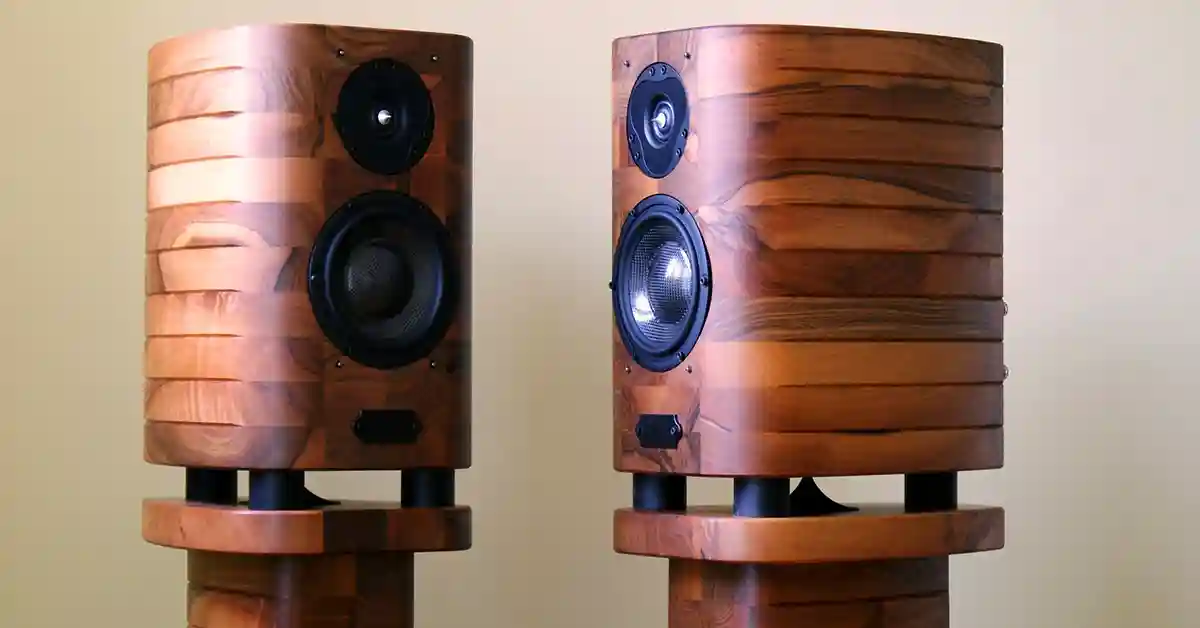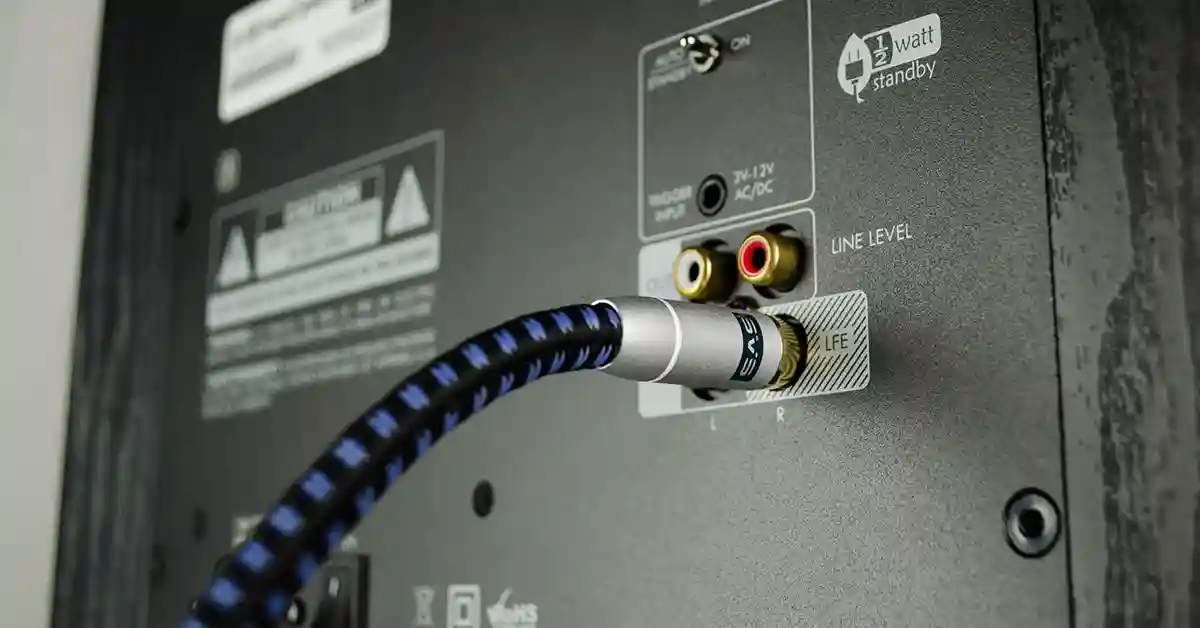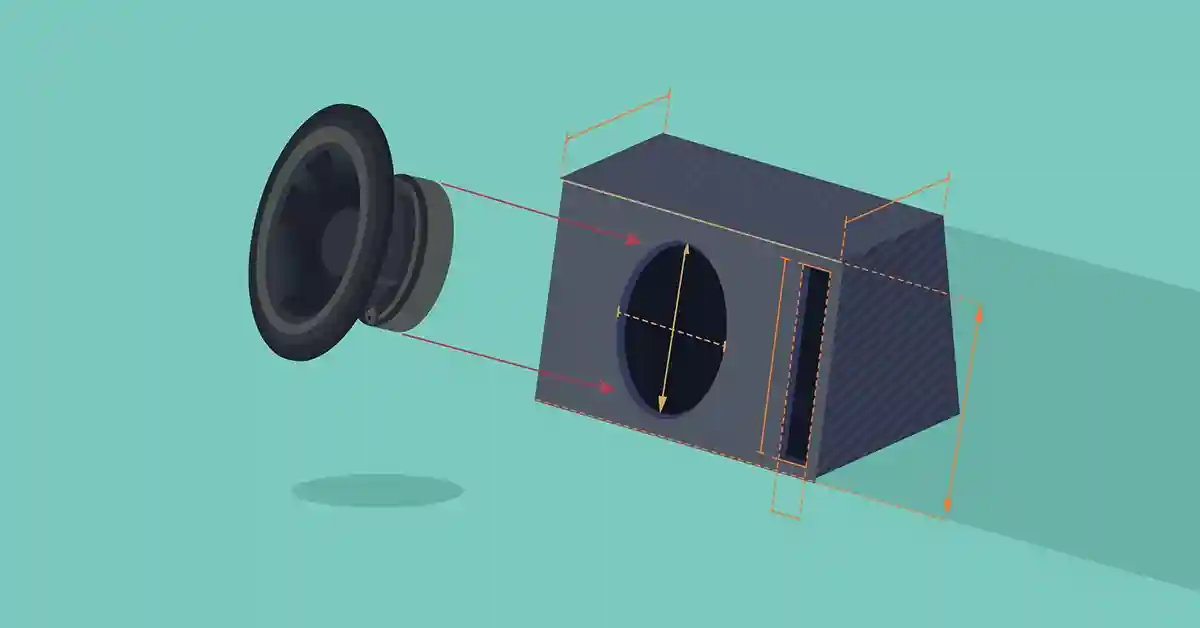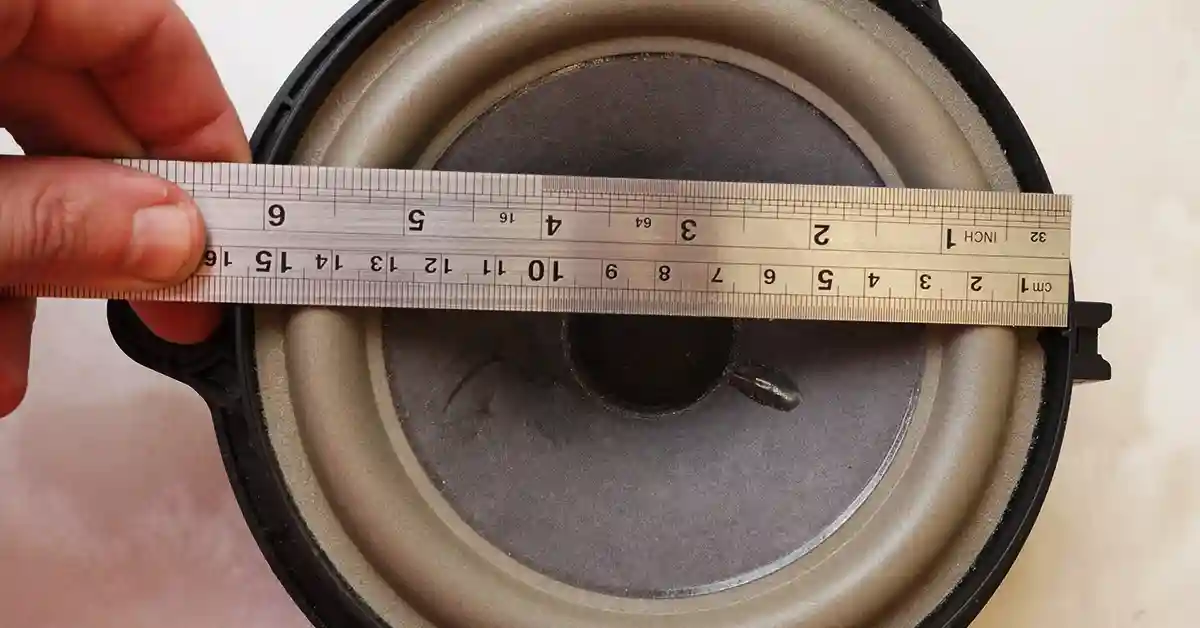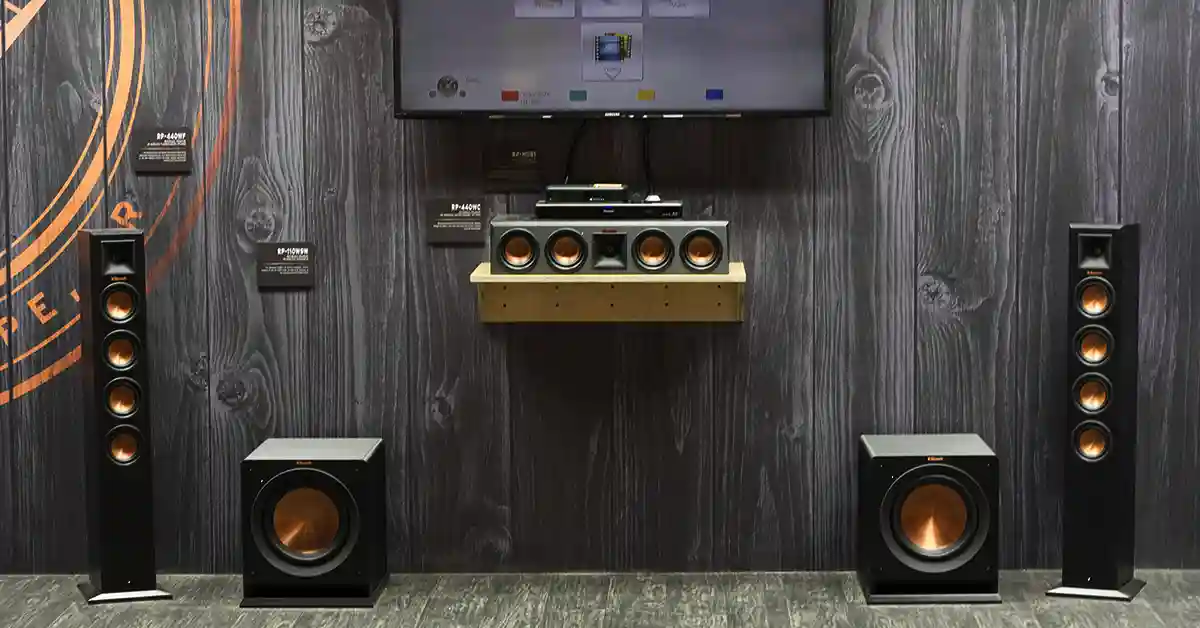How To Daisy Chain Speakers
- You can daisy-chain active speakers [View Instructions]
- You can daisy-chain passive speakers [View Instructions]
- You can daisy-chain powered subwoofers [View Instructions]
- You can also use a speaker selector for daisy-chaining [View Instructions]
Daisy chaining speakers is a simple solution for connecting multiple speakers to a single audio source. This makes it possible to extend the sound input signal to all speakers that are connected to the chain.
It is often used in PA systems, in meeting or conference rooms, or, with at-home audio systems that use single power output to feed multiple lounge room speakers.
In this article, we'll cover how to daisy chain your speakers quickly, safely, and effectively to ensure the highest sound quality possible that comes from your pair of speakers.
How Many Speakers Can Be Daisy Chained Together?
The number of speakers you can chain together depends on your current setup.
You should not chain more than two speakers in a single chain, because multiple connected speakers increase the resistance within the overall sound system. When the amplifier senses an overall resistance that's too low, it increases the current that it supplies - which can lead to amplifier overload.
Active pairs of speakers have their own amplifier, meaning they don't have to rely on your main amplifier for their current. This makes them easier to chain together, as many pairs of HiFi speakers can be strung together using speaker cable without too much drain on your main power source.
Passive speakers do not have their own amplifier or source, meaning that the net impedance of speakers is higher when compared to active speakers. When daisy-chaining passive speakers, one must consider that impedance loads will always be greater which can lead to mechanical or thermal failure.
The Role Of Impedance In Daisy Chains
A daisy-chained setup requires speakers that are connected together, which will always increase total load impedance. Due to Ohm's law, every speaker and wire that is added to the system contributes a certain level of resistance or impedance.
Because the supplied current comes from an amplifier, the amplifier power output is an alternating current (AC) and measured in Ohms (Ω) as impedance. If it were from direct current (DC), it would still be measured in Ohms (Ω) but as resistance.
If the combined impedance of the speakers is lower than the amplifier can handle, it will draw more current into the system which could overpower speakers and other components. This can result in blown amplifers, melted voice coils, or blown speakers.
You might want to refer to this calculator for speakers to understand how your speaker combination will be affected when daisy-chaining popular speakers. This also serves as a calculator for amplifier power so you know the correct power needed for your setup.
A basic understanding of speaker impedance is therefore essential to know the relationship between amplifier power and the speakers in your system. Without it, you could expose your setup to a higher-impedance load that it can handle which could break something permanently and cost you money.
Daisy Chaining Speakers: A Simple, Straightforward Process
Daisy-chaining is usually done manually through speaker cable arrangements to various speakers.
However, a simple turnkey solution would be to use a dedicated speaker selector switch. This device uses specialized electrical components to reduce the risk of thermal or mechanical failure throughout the sound system.
If you want, skip ahead to see how speaker selector switches are used for daisy-chaining.
For now, however, let's understand the various ways that you can connect speakers in a daisy chain:
- Wiring speakers in parallel, reducing overall speaker impedance.
- Wiring speakers in series, increasing overall speaker impedance.
- Wiring speakers in series-parallel connections, maintaining system impedance.
When daisy-chaining, we must remember that amplifiers come in different configurations. Typically, amplifiers have dedicated amp channels to individual speakers but there can be exceptions.
Daisy-chaining Active Speakers
As mentioned before, daisy-chaining active speakers in series is relatively simple and common practice.
This is because each speaker has its own amplifier, meaning that speakers can be connected in series without creating higher impedance loads than if they were passive speakers. They also have connections for daisy-chaining, making them purpose-built for this activity.
To daisy-chain your active speakers, follow these simple steps below:
- Make sure every connection between a speaker and amplifier to a power socket is off.
- Arrange your speakers as close to a real-world setup as possible.
- Locate the left and right speaker outs behind your amplifier, which look like this.

- Connect the corresponding speaker outs (Left/Right) to the correct speaker using a cable.
- Starting with the left speaker, turn to the back and find the speaker out with a port which is usually labeled 'thru, 'mix output', or 'link output'.
- Run a cable (usually XLR, or "1/4) to the next consecutive left speaker in the sequence, and continue with all the left-hand speakers that you want to connect.
- Move on to the first right-hand speaker and repeat Steps 5 & 6 until you've connected all the right-side speakers that you want to.
- Ensure that the volume across all speakers is set to the same level. If your speakers have equalizers, ensure that the EQ levels are set the same across all speakers in the chain.
- Now turn the whole system on and starting with a low volume, slowly increase it until you've reached the desired volume level.
When following the above steps, ensure to keep the length of your cables to a minimum in order to alleviate any background noise or electrical hums. Make sure to match your volume control units and keep the maximum volume lowered in order to prevent any power surges to your amp.
It's advised to use XLR cables where possible to maintain balanced signals and a balanced stereo sound.
Connection Diagrams For Daisy-chaining Powered Speakers
The below diagram has been inserted to help you understand the signal flow between all components connected in a daisy chain.

Steps For Daisy-chaining Passive Speakers
Daisy-chaining passive speakers require a bit more effort than active speakers.
This is because passive speakers don't have their own amplifiers, so every additional speaker needs to draw on the main amplifier's current to power it. If the impedance of speakers is lower than what your amplifier can tolerate, the system will be forced to draw in more current which can cause damage.
To daisy-chain your passive speakers, we can use any of the methods below.
Connecting Passive Speakers In Parallel
A parallel wiring arrangement is the most common way for people to chain speakers together, which is why people who use this method often say that they have "daisy-chained" speakers.
Speakers in parallel will be wired by creating a single loop between the source's positive terminals and all the positive terminals of all speakers using multiple wires. A second loop is also introduced, connecting the source's negative terminals to all negative speakers' terminals using multiple wires.

The pros and cons of a parallel wiring setup are explained below, which are typically are:
| PROS | CONS |
| Voltage remains constant, ensuring the current is steady. | Many wires are needed to create all connections. |
| A broken connection will not impact the current of other connections. | Difficult to add and remove speakers due to higher-impedance load. |
| Current can freely pass through all paths of the circuit. | Increased voltage requirement lowers resistance throughout the whole circuit. |
While voltage remains constant in parallel, amplifier load can greatly be increased if an additional speaker is added which can lead to blown parts and system failure.
Connecting Passive Speakers In Series
Connecting speakers in series also require creating two exterior loops.
However, the difference is that a single wire is used to connect the source's negative terminal to the negative terminal of the final speaker.
For the positive terminals, multiple wires are used to connect the source's positive terminal to the positive terminal of the first speaker. A second wire then connects the first speaker's negative terminal to the next speaker's positive terminal - which is continued until the final speaker is reached.
You can also only run one-way matched speakers in series, as crossover networks won't work properly in series if an inductive load is present. There are also other complications present which mean that the combined sound of all speakers may not be up to your desired standard.

The pros and cons of a series wiring setup are explained below, which are typically are:
| PROS | CONS |
| Simple solution for adding multiple speakers to a system. | Poorer sound and volume for additionally connected speakers. |
| Impedance load doesn't increase with more additions, meaning less risk of system failure. | If one speaker is damaged, then current won't flow throughout the whole system. |
| Easy connection style for simple at-home systems. | Poor connection style for 2-way speakers or similar. |
We can see that even though series connections are more simple for speakers, but their major downfall is the reduction in quality for all speakers in the system. Speakers in series will also result in total system failure if a single component is broken in the circuit.
Connecting Passive Speakers In Series-Parallel
Series-parallel connections are considered some of the safest ways to connect speakers, because they keep the overall circuit impedance the same if every speaker has the same resistance. They still serve as the best way to connect speakers using a combination of series and parallel connections.
However, they can be impractical because they require a lot of speaker wires to form all the necessary connections.

The pros and cons of a series-parallel wiring setup are explained below, which are typically are:
| PROS | CONS |
| If all speakers have the same resistance, the total system resistance will match this. | Requires a lot of speaker wire to connect all pairs of speakers in the connection. |
| Speakers will still function if a single speaker is removed. | Speaker volume is centrally controlled by main amplifier volume control, meaning no individual speaker volume can be different. |
| Level of sound is preserved because current is properly distributed. |
Series-parallel connections are safer than either a series and a parallel connection on their own, but require a more complicated setup with more in-depth planning.
Their main advantage is that the total Ohm load is preserved, as long as the resistance of all speakers is kept constant. For example, a circuit comprised of only 16-Ohm speakers will have a total system resistance of 16 Ohms.
The same remains true if the total system was comprised of only 8-Ohm speakers or 4-Ohm speakers - the rule is universal and applies across all series-parallel circuit connections.
Therefore, frequency range is more likely to be preserved across a series-parallel circuit.
Daisy-chaining Powered Subwoofers
Sometimes, you might want to connect different types of speakers to your daisy-chain, like subwoofers.
Because subwoofers are also just speakers, they can be daisy-chained in all the ways that have been described above. However, because most subwoofers are active with their own power-supply, we can simply connect them the same way that we'd connect active speakers in series.
Steps for Daisy-Chaining Powered Subwoofers
Daisy-chaining powered subwoofers can be done using the following steps:
- Remove all connections to power sockets, and all system power switches are set to 'off'.
- Place the subs in real-world position as best as you can, to make setting up easier.
- Locate the back panel with the port used to connect subwoofers, usually identifiable with the label 'Aux Send' or something similar.
- Similar to our active speakers' example, connect the source to your subwoofer using the port on the back of the subwoofer labeled 'thru', 'output', or something similar.
- Stop here, or if you want to connect more subwoofers, simply repeat the above steps by connecting each consecutive subwoofer with a separate cable to its respective 'thru', 'output', or a similar port.
Using A Speaker Selector Switch
A speaker selector switch reduces the need to manually wire pairs of speakers in a daisy chain.
It does all the hard work for you, by taking a single audio signal from an amplifier/source and outputting this to all output devices that are connected to it. It uses technical settings and components to reduce the risk of failure from daisy-chaining speakers to one amplifier - like:
- A series resistor between 2.5-5Ω to reduce the minimum impedance of the total system.
- Using series and parallel connections to keep total system impedance above 4 ohms to protect your amplifier from impedance overload.
- Introduce impedance-matching transformers to match the source with the impedance of speakers that are connected to the circuit.
The speaker selector switch simulator below shows a diagram of how speakers selector switches work.

A speaker selector lets you adjust all speakers, giving an overall better sounding system.
Speaker selector switches are typically designed for multi-room setups in the home, like lounge room speakers connected to lower power amplifiers (100 watts or less). They shouldn't be used for higher-end commercials systems or those that use high-output amplifiers.
If you opt for more control, the type of speakers selector switch can also add more functionality to your speaker setup.
More expensive models have an independent volume control, so you can easily control the volume for individual speakers that are connected. This is highly convenient for speakers on channels that are connected to different rooms, like a bunch of ceiling speakers connected both inside and outside. It might also be worth looking for a self-volume balancer, which uses specialized components to match speaker volume to ambient noise levels. And finally, more complex speaker selector switches will also account for dynamic range, reducing this so that more amplifier power is delivered.
While a lot more planning is needed for at-home setups, buying a speaker selector switch is generally recommended for those wanting to developed custom, highly-controllable multi-room setups for compatible devices in the home.
Daisy Chaining Speakers FAQ
Should You Daisy Chain In Series Or Parallel?
You can chain speakers in either series or parallel, but the best option is a series-parallel connection. The next safest choice is speakers in a parallel connection and finally, a series connection.
Can You Daisy Chain Stereo Speakers?
You can chain stereo speakers but because they lack an amplifier or power source, you will need to consider getting an amplifier as the main power source and then connect your speakers in parallel or series-parallel.
Can I Daisy Chain An Active Speaker To A Passive Speaker?
It's not advised to chain an active speaker to a passive one, because passive speakers will draw current from the active speakers in your chain and can disturb circuit impedance. However, daisy-chaining two active speakers using an XLR splitter is often recommended.
Can I Daisy Chain Speakers To Subwoofers?
Yes, daisy-chaining a speaker to a subwoofer is an easy and common solution. Often, active speakers are sold as 'tops' as part of a speaker and a subwoofer combo - making this type of chain easier to do with more modern setups.
Does Daisy-chaining Lead To A Loss Of Sound Quality?
Speakers can lose some of their power if not set up properly, especially when in series. However, active speakers with their own amp power should have their sound quality preserved.
You can use a power usage calculator to get a power formula to understand the relationship between power and impedance for your circuit. As long as power distribution is maintained evenly, the speakers in question should retain their quality with the proper electrical power arrangement.
In Closing: Getting Daisy Chains Done And Dusted
Daisy chains are a great solution for those looking to connect multiple speakers and subwoofers within a sound system. It also has multiple uses, and can even be used to connect other AV equipment, like when you daisy chain monitors together.
If you want to build a powerful at-home setup and mitigate getting a separate channel amp for your speakers or reduce your speaker channels completely, a daisy chain is the best way to go. This is true if you're trying to configure your conference room AV setup, or, better arrange your at-home setup - daisy chaining speakers is still one of the best ways to connect 2 speakers together.
Due to the technical nature of these setups, it also had the added benefit of educating you more about your system components. This leads to a much greater holistic understanding of your speaker channels, ohm load, and power distribution of your overall system.
So, next time an AV or speaker professional needs to be called - you may have just picked up the passive knowledge needed to solve this problem yourself and save yourself a few dollars.
Related Articles

